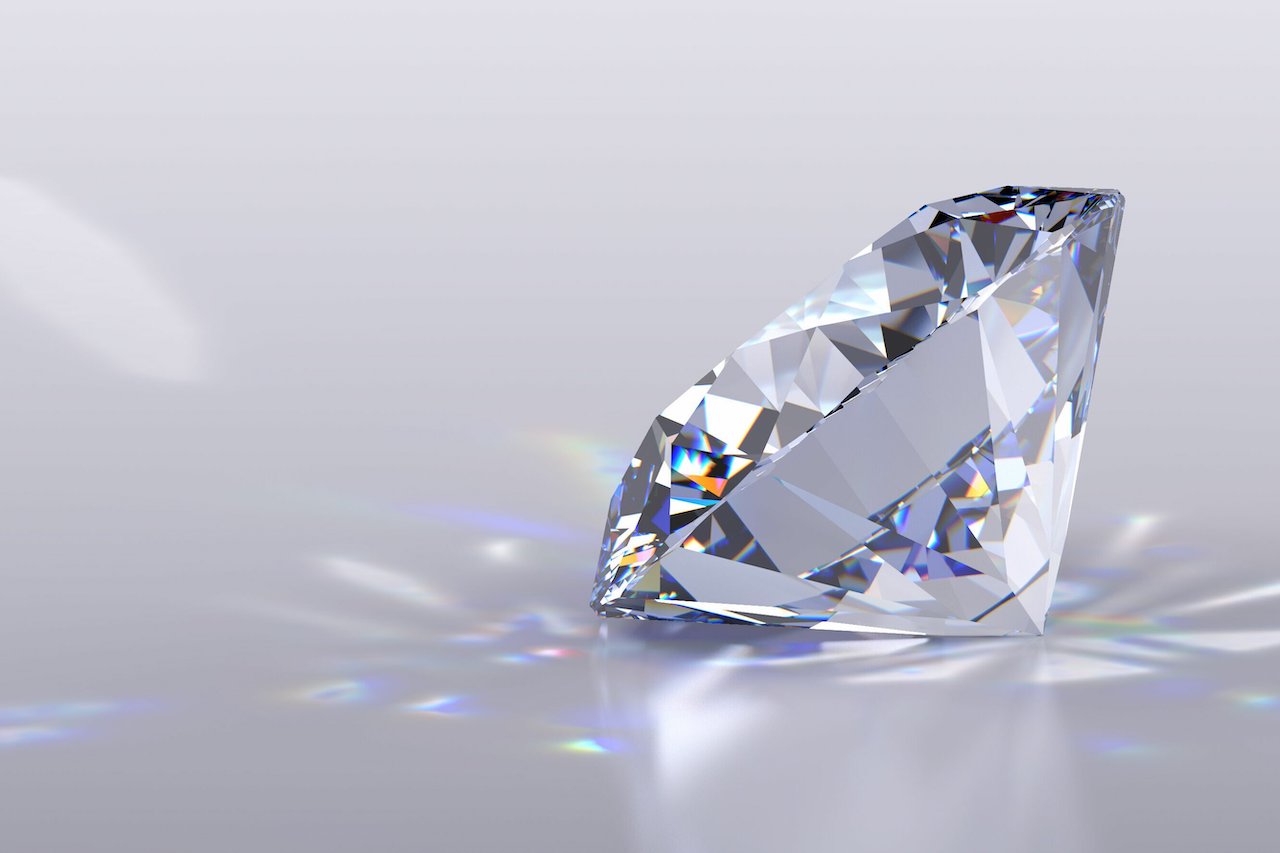A question that comes up almost every day in every jewelry shop is, ‘Is my diamond real?’ Most of the time, jewelers and gemologists can easily tell. However, with the growth of technology and lab-grown diamonds, it can become increasingly difficult to tell and thus accurately value a piece of diamond jewelry. While there are plenty of so-called hacks available online, the vast majority are inaccurate or simply don’t work. Below are four tips on how to tell whether or not your diamond is a real natural diamond.
Look For Any Laser Inscription
Almost all high-quality diamonds sold today are certified, with GIA being the most popular. Nowadays, most certified diamonds are laser inscribed. This means that the certificate number as well as any other messages have been laser inscribed onto the surface of the girdle of the diamond, which is the middle of the diamond.
While the laser inscription cannot be seen with the naked eye, it can be seen with a jeweler’s magnifying glass, called a loupe (pronounced ‘loop’). These little devices have 10× magnification, sometimes more, and come in several different varieties, with some made especially for reading laser inscriptions. Starting from a couple of bucks, these can easily be found on eBay or Amazon.
Above: Example of a laser inscription
Weigh And Measure The Stone
After looking at the stone, the first thing most jewelry professionals do is weigh and measure the stone. Since cubic zirconia (the most common diamond simulant) has a specific gravity of about 60% more than diamond, it is easy to tell just by finding out the diameter and weight. For this test, you will need a millimeter gauge or micrometer and a carat scale. Again, these tools can be bought from eBay or Amazon fairly cheaply, or you can ask a jeweler in your area to perform the test for you.
Take It To An Appraiser To Determine If It’s Diamond
If by now you’re still not sure whether your stone is real or not, you should employ the services of an appraiser with the proper knowledge and tools. Apart from the two previous tests, the appraiser will use a refractometer to determine the refractive index of the stone. Diamond has a refractive index of 2.417. If the stone has a refractive index of anything other than 2.417, then it is not diamond.
Additionally, the appraiser may have a tool to determine if the diamond is natural or lab grown. Since lab-grown diamonds are now commonplace and are generally valued at about 20% of what a natural diamond is, knowing whether your diamond is natural or lab grown could be the difference between a stone worth $2000 and one that costs $10,000.
In addition to this, if your stone is diamond, the appraiser will be able to judge the 4Cs—that is, the diamond’s carat weight, color, clarity, and cut. The appraiser will also be able to give you the current market value. However, determining a diamond’s value once you have the specifications is easy to do by looking online.
Above: GIA ID100 checks if a diamond is natural or not
Send It To A Lab To Find Out If It’s Natural
If by now you’re still not sure whether your stone is diamond or if it’s natural or not, then it’s time to send it to a lab for certification. Considered the gold standard for diamond grading, the Gemological Institute of America (GIA) is the lab recommended by most jewelry professionals. Given that GIA has labs in Carlsbad and New York, as well as other major cities around the world, you will probably need to send it to them.
To send your jewelry to GIA, follow their submission instructions, which are easy to understand. After this, you will need to package it properly and ensure you have the appropriate transit insurance. After GIA has graded it, you will be issued with a certificate, which is then an ironclad guarantee that your jewelry is diamond, as well as detailed information about the diamond’s characteristics, including the 4Cs, measurements, polish symmetry, and fluorescence.

Leave a Reply